What is tendonitis?
Tendonitis, also called tendinitis, is when a tendon becomes inflamed, often from overuse or injury when moving your body. Tendons are strong, flexible tissues that connect muscles to bones, helping you move. Every time you swing a tennis racket, grab a cup of coffee, go for a run or squat to reach a low cabinet, your tendons are working to make those movements possible.
Your body has around 4,000 tendons. While tendons support your movement, too much strain or repetitive activity can cause them to become inflamed or injured. Tendonitis can happen in different areas of your body, like the heel, shoulder, elbow, ankles or knees.
Types of tendonitis
Tendonitis types are often named after the sport or the area of the body where the injury occurs. Some of the most common types of tendonitis include:
- Achilles tendonitis
- Biceps tendonitis
- DeQuervain's tenosynovitis
- Golfer’s elbow
- Jumper’s knee
- Pitcher’s shoulder
- Runner’s knee
- Swimmer’s shoulder
- Tennis elbow
- Trigger finger
Tendonitis symptoms
The most common symptoms of tendonitis include:
- Pain at the site of the tendon and the surrounding area, which may worsen with movement
- Stiffness or difficulty moving the affected joint
- A cracking or popping sensation that you may hear or feel when moving
- Swelling, often accompanied by skin discoloration (red, purple or darker than your natural skin tone)
When to see a doctor
See your primary care provider if symptoms of tendonitis affect your ability to function normally or prevent you from participating in your favorite activities. Your provider may be able to diagnose tendon inflammation and recommend treatment. On the other hand, they may refer you to an orthopedic surgeon for more specialized care, especially if you’ve been dealing with symptoms for a long time.
You should also see a doctor if your symptoms worsen after a few days of at-home care. If, for example, you develop a fever or can’t move your affected arm or leg, seek medical help as soon as possible.
What causes tendonitis?
In most cases, tendonitis develops due to overuse and repetitive motion. If you play tennis, for example, swinging a racket again and again, day after day, can irritate your elbow tendons and cause tendonitis. You can also develop tendonitis if your job calls for performing the same movements over and over. Painters, for example, tend to be at higher risk for tendonitis.
Less commonly, you may develop tendonitis due to an injury or by stretching a tendon too far during a sudden movement. Tendon inflammation may also occur due to a condition that can increase the risk of inflammation, such as diabetes or osteoarthritis.
Tendonitis risk factors
The most common cause of tendonitis is repetitive motion. Tendons allow you to perform the same movement repeatedly, and tendinitis can develop if you frequently repeat the same motion during sports or work. The risk is higher if the motion is done incorrectly.
Tendinitis can also be caused by:
Aging
As you age, your tendons naturally lose some flexibility. As a result, they can become injured and inflamed more easily.
Certain medications
Some medications, such as statins and aromatase inhibitors, can increase the risk of tendon damage.
Profession
Tendinitis is more common in people, such as gardeners and manual laborers, whose jobs involve repeated motions, awkward positions, frequent overhead reaching, vibration and forced movements.
Sports
Sudden increase in training intensity, repetitive motions (such as pitching), insufficient recovery time after an injury or poor athletic form can increase the risk of tendonitis.
Complications
Tendonitis can be inconvenient in the short term, especially if you have to take time away from sports or other activities to allow the tendon to heal. Ignoring the condition, though, may allow it to become a long-term problem. Without treatment, symptoms may become persistent, and the tendon could degenerate. Inflammation may strain the tendon until it tears.
Complications of untreated tendonitis can include:
- Chronic discomfort: Persistent inflammation can cause low-level pain whenever you move.
- Muscle weakness: The muscles near the tendon may grow weaker and affect joint functioning.
- Reduced functioning: Moving the affected joint may become more difficult as tendon inflammation persists.
- Tendon rupture: Unchecked irritation of the tendon may eventually cause it to rupture, or tear.
How is tendonitis diagnosed?
To diagnose tendonitis, your physician will gather information about your symptoms and examine the affected area to look for signs of an inflamed tendon. A medical history and exam can provide valuable information. To confirm the diagnosis, though, the physician will order imaging tests to check the condition of your tendons.
-
Medical history and exam
Be prepared to tell your doctor as much as possible about your symptoms, including what they feel like, when they began, whether certain activities trigger them, how they affect your quality of life and what you’ve done to manage them.
Your doctor will examine the area of your body in question. They will look for signs of inflammation and may ask you to move the area in different ways to see whether doing so causes pain or tenderness.
-
Imaging
Looking inside your body to see the tendon and the area around it can allow your physician to confirm a tendonitis diagnosis or rule it out. Common imaging tests for tendonitis include:
- MRI scan: An MRI can provide a detailed image of the tendon so your doctor can see the tissue’s structure and thickness and look for tears.
- Ultrasound: An ultrasound may show swelling of a tendon, which may be a sign of tendonitis.
- X-ray: Tendons and other soft tissues aren’t visible on X-rays. However, your physician may order an X-ray to look for other potential causes of your symptoms, such as bone spurs.
Tendonitis treatment
The main goals of treating tendinitis are to ease discomfort and reduce swelling. In most cases, self-care like rest, ice and over-the-counter pain relievers can help. However, it may take several months to recover fully.
Lifestyle and home remedies
To treat tendinitis at home, follow the R.I.C.E. method: rest, ice, compression and elevation. These steps can help reduce pain, speed recovery and prevent further issues.
- Rest: Take a break from activities that make the pain or swelling worse. Don’t push through the pain—your body needs time to heal. You can still do low-impact activities that don’t strain the injured tendon, like swimming or water exercises.
- Ice: Apply ice to the affected area for up to 20 minutes several times a day to reduce pain, swelling and muscle spasms. You can use an ice pack, try ice massage, or make a slush bath with ice and water. For ice massage, freeze a paper cup of water and rub the ice directly on the skin.
- Compression: Wrap the injured area with an elastic bandage or wrap to reduce swelling and prevent stiffness. Be sure to wrap it snugly, but not too tightly.
- Elevation: If the injury is in your lower extremity, raise your leg above the level of your heart to help reduce swelling.
While rest is important for healing, keeping your joint completely still for too long can lead to stiffness. After a few days, gently stretch and move the joint through its full range of motion to keep it flexible.
Medication
While you rest the tendon and use heat or ice to treat pain and swelling, you can also manage symptoms with medication.
- Corticosteroid injections: Only available at a medical facility with a medical provider’s prescription, these injections can reduce tendon pain and inflammation.
- Nonsteroidal anti-inflammatory drugs (NSAIDs): Over-the-counter medications, such as aspirin and ibuprofen, can help with pain and swelling related to inflammation.
Physical therapy
You may also benefit from physical therapy. Physical therapists can show you stretches and exercises to reduce inflammation, improve range of motion and boost strength. They can also help you understand how to reduce the risk of tendonitis in the future.
Surgery and other procedures
Rarely, some cases of tendonitis don’t respond to conservative treatments, leaving surgery as the best option to fix the problem. Your provider can help you decide whether surgery makes sense for you based on how you’ve fared with other treatments and the goals you want to achieve.
Tendonitis surgeries vary according to the affected tendon and the severity of the condition. Common tendonitis surgeries include:
- Debridement: The surgeon removes damaged areas of the tendon and reattaches the healthy portions.
- Tendon repair: If the tendon is torn, the surgeon will sew the damaged parts back together. If you’ve experienced a severe injury, the surgeon may use an artificial tendon or a piece of tendon from elsewhere in your body to repair the damage.
Locations
We offer several locations for your care, including orthopedic specialty centers in North and Central Texas.

Baylor Scott & White - The Brenham Clinic
600 N Park St , Brenham, TX, 77833
- Monday: 7:30 am - 5:00 pm
- Tuesday: 7:30 am - 5:00 pm
- Wednesday: 7:30 am - 5:00 pm
- Thursday: 7:30 am - 5:00 pm
- Friday: 7:30 am - 5:00 pm

Baylor Scott & White All Saints Medical Center - Fort Worth
1400 8th Ave , Fort Worth, TX, 76104

Baylor Scott & White Clinic - Austin Downtown
200 E Cesar Chavez St Ste G140, Austin, TX, 78701
- Monday: 8:00 am - 5:00 pm
- Tuesday: 8:00 am - 5:00 pm
- Wednesday: 8:00 am - 5:00 pm
- Thursday: 8:00 am - 5:00 pm
- Friday: 8:00 am - 5:00 pm

Baylor Scott & White Clinic - Austin Oak Hill
5251 US 290 , Austin, TX, 78735
- Monday: 8:00 am - 5:00 pm
- Tuesday: 8:00 am - 5:00 pm
- Wednesday: 8:00 am - 5:00 pm
- Thursday: 8:00 am - 5:00 pm
- Friday: 8:00 am - 5:00 pm

Baylor Scott & White Clinic - Buda Medical Center
5330 Overpass Rd Ste 100, Buda, TX, 78610
- Monday: 8:00 am - 5:00 pm
- Tuesday: 8:00 am - 5:00 pm
- Wednesday: 8:00 am - 5:00 pm
- Thursday: 8:00 am - 5:00 pm
- Friday: 8:00 am - 5:00 pm

Baylor Scott & White Clinic - College Station Rock Prairie
800 Scott and White Dr , College Station, TX, 77845
- Monday: 7:30 am - 5:00 pm
- Tuesday: 7:30 am - 5:00 pm
- Wednesday: 7:30 am - 5:00 pm
- Thursday: 7:30 am - 5:00 pm
- Friday: 7:30 am - 5:00 pm

Baylor Scott & White Clinic - Pflugerville Medical Center (Building 1)
2600 E Pflugerville Pkwy Bldg 1, Ste 200, Pflugerville, TX, 78660
- Monday: 8:00 am - 5:00 pm
- Tuesday: 8:00 am - 5:00 pm
- Wednesday: 8:00 am - 5:00 pm
- Thursday: 8:00 am - 5:00 pm
- Friday: 8:00 am - 5:00 pm
- Monday: 7:30 am - 4:00 pm
- Tuesday: 7:30 am - 4:00 pm
- Wednesday: 7:30 am - 4:00 pm
- Thursday: 7:30 am - 4:00 pm
- Friday: 7:30 am - 4:00 pm

Baylor Scott & White Clinic - Round Rock 300 University
300A University Blvd , Round Rock, TX, 78665
- Monday: 8:00 am - 5:00 pm
- Tuesday: 8:00 am - 5:00 pm
- Wednesday: 8:00 am - 5:00 pm
- Thursday: 8:00 am - 5:00 pm
- Friday: 8:00 am - 5:00 pm

Baylor Scott & White Medical Center - Austin
5245 W US Hwy 290 Service Rd , Austin, TX, 78735

Baylor Scott & White Medical Center - Brenham
700 Medical Pkwy , Brenham, TX, 77833

Baylor Scott & White Medical Center - Buda
5330 Overpass Rd , Buda, TX, 78610

Baylor Scott & White Medical Center - Centennial
12505 Lebanon Rd , Frisco, TX, 75035

Baylor Scott & White Medical Center - College Station
700 Scott and White Dr , College Station, TX, 77845

Baylor Scott & White Medical Center - Frisco
5601 Warren Pkwy , Frisco, TX, 75034

Baylor Scott & White Medical Center - Grapevine
1650 W College St , Grapevine, TX, 76051

Baylor Scott & White Medical Center - Hillcrest
100 Hillcrest Medical Blvd , Waco, TX, 76712

Baylor Scott & White Medical Center - Irving
1901 N MacArthur Blvd , Irving, TX, 75061

Baylor Scott & White Medical Center - Lake Pointe
6800 Scenic Dr , Rowlett, TX, 75088

Baylor Scott & White Medical Center - Lakeway
100 Medical Pkwy , Lakeway, TX, 78738

Baylor Scott & White Medical Center - Marble Falls
810 W State Hwy 71 , Marble Falls, TX, 78654

Baylor Scott & White Medical Center - McKinney
5252 W University Dr Highway 380 at Lake Forest Drive, McKinney, TX, 75071

Baylor Scott & White Medical Center - Pflugerville (Building 1)
2600 E Pflugerville Pkwy Bldg 1, Ste 100, Pflugerville, TX, 78660

Baylor Scott & White Medical Center - Plano
4700 Alliance Blvd , Plano, TX, 75093

Baylor Scott & White Medical Center - Round Rock
300 University Blvd , Round Rock, TX, 78665

Baylor Scott & White Medical Center - Sunnyvale
231 S Collins Rd , Sunnyvale, TX, 75182

Baylor Scott & White Medical Center - Temple
2401 S 31st St , Temple, TX, 76508

Baylor Scott & White Medical Center - Waxahachie
2400 N Interstate 35E , Waxahachie, TX, 75165

Baylor Scott & White Orthopaedic Trauma Associates - Dallas
3409 Worth St Ste 300, Dallas, TX, 75246
- Monday: 8:00 am - 4:30 pm
- Tuesday: 8:00 am - 4:30 pm
- Wednesday: 8:00 am - 4:30 pm
- Thursday: 8:00 am - 4:30 pm
- Friday: 8:00 am - 2:00 pm

Baylor Scott & White Orthopaedic Trauma Associates - Grapevine
1631 Lancaster Dr Ste 230, Grapevine, TX, 76051
- Monday: 8:00 am - 4:30 pm
- Tuesday: 8:00 am - 4:30 pm
- Wednesday: 8:00 am - 4:30 pm
- Thursday: 8:00 am - 4:30 pm
- Friday: 8:00 am - 2:00 pm

Baylor Scott & White Orthopaedic Trauma Associates - McKinney
5220 W University Dr POB II, Ste 220, McKinney, TX, 75071
- Monday: 8:00 am - 4:30 pm
- Tuesday: 8:00 am - 4:30 pm
- Wednesday: 8:00 am - 4:30 pm
- Thursday: 8:00 am - 4:30 pm
- Friday: 8:00 am - 2:00 pm

Baylor Scott & White Orthopedic Associates of Dallas
3900 Junius St Ste 500, Dallas, TX, 75246
- Monday: 8:00 am - 5:00 pm
- Tuesday: 8:00 am - 5:00 pm
- Wednesday: 8:00 am - 5:00 pm
- Thursday: 8:00 am - 5:00 pm
- Friday: 8:00 am - 5:00 pm
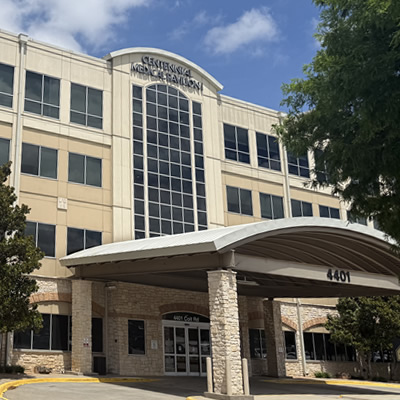
Baylor Scott & White Orthopedic Associates of Dallas - Centennial
4401 Coit Rd Ste 203, Frisco, TX, 75035
- Monday: 8:00 am - 5:00 pm
- Tuesday: 8:00 am - 5:00 pm
- Wednesday: 8:00 am - 5:00 pm
- Thursday: 8:00 am - 5:00 pm
- Friday: 8:00 am - 4:00 pm

Baylor Scott & White Orthopedic Associates of Dallas - Flower Mound
1110 Parker Sq , Flower Mound, TX, 75028
- Monday: 8:00 am - 5:00 pm
- Tuesday: 8:00 am - 5:00 pm
- Wednesday: 8:00 am - 5:00 pm
- Thursday: 8:00 am - 5:00 pm
- Friday: 8:00 am - 5:00 pm

Baylor Scott & White Orthopedic Associates of Dallas - Grapevine
1631 Lancaster Dr Ste 230, Grapevine, TX, 76051
- Monday: 8:00 am - 5:00 pm
- Tuesday: 8:00 am - 5:00 pm
- Wednesday: 8:00 am - 5:00 pm
- Thursday: 8:00 am - 5:00 pm
- Friday: 8:00 am - 5:00 pm

Baylor Scott & White Orthopedic Associates of Dallas - McKinney
5220 W University Dr POB II, Ste 300, McKinney, TX, 75071
- Monday: 8:00 am - 5:00 pm
- Tuesday: 8:00 am - 5:00 pm
- Wednesday: 8:00 am - 5:00 pm
- Thursday: 8:00 am - 5:00 pm
- Friday: 8:00 am - 5:00 pm

Baylor Scott & White Orthopedic Associates of Dallas - North Garland
7217 Telecom Pkwy Ste 325, Garland, TX, 75044

Baylor Scott & White Orthopedic Associates of Dallas - Park Cities
9101 N Central Expy Ste 370, Dallas, TX, 75231

Baylor Scott & White Orthopedic Associates of Dallas - Plano
4716 Alliance Blvd Pavilion II, Ste 600, Plano, TX, 75093

Baylor Scott & White Orthopedic Associates of Dallas - Sunnyvale
341 Wheatfield Dr Ste 290, Sunnyvale, TX, 75182

Baylor Scott & White Orthopedic Associates of Dallas at The Star
3800 Gaylord Pkwy Ste 810, Frisco, TX, 75034
- Monday: 8:00 am - 5:00 pm
- Tuesday: 8:00 am - 5:00 pm
- Wednesday: 8:00 am - 5:00 pm
- Thursday: 8:00 am - 5:00 pm
- Friday: 8:00 am - 5:00 pm

Baylor Scott & White Outpatient Rehabilitation - Hewitt
511 N Hewitt Dr Ste 10, Hewitt, TX, 76643
- Monday: 8:00 am - 5:00 pm
- Tuesday: 8:00 am - 5:00 pm
- Wednesday: 8:00 am - 5:00 pm
- Thursday: 8:00 am - 5:00 pm
- Friday: 8:00 am - 12:30 pm

Baylor Scott & White Roney Bone and Joint Institute - Temple
2401 S 31st St , Temple, TX, 76508
- Monday: 8:00 am - 5:00 pm
- Tuesday: 8:00 am - 5:00 pm
- Wednesday: 8:00 am - 5:00 pm
- Thursday: 8:00 am - 5:00 pm
- Friday: 8:00 am - 5:00 pm
- Saturday: 7:00 am - 5:00 pm
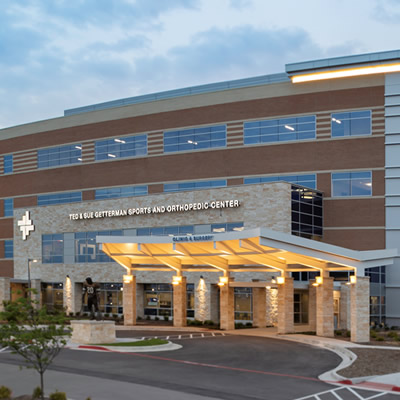
Baylor Scott & White Southwest Sports Medicine & Orthopaedics
140 Hillcrest Medical Blvd 2nd Floor, Waco, TX, 76712
- Monday: 8:00 am - 5:00 pm
- Tuesday: 8:00 am - 5:00 pm
- Wednesday: 8:00 am - 5:00 pm
- Thursday: 8:00 am - 5:00 pm
- Friday: 8:00 am - 5:00 pm

Baylor Scott & White Specialty Clinic - Killeen Hemingway
2405 S Clear Creek Rd , Killeen, TX, 76549
- Monday: 8:00 am - 5:00 pm
- Tuesday: 8:00 am - 5:00 pm
- Wednesday: 8:00 am - 5:00 pm
- Thursday: 8:00 am - 5:00 pm
- Friday: 8:00 am - 5:00 pm
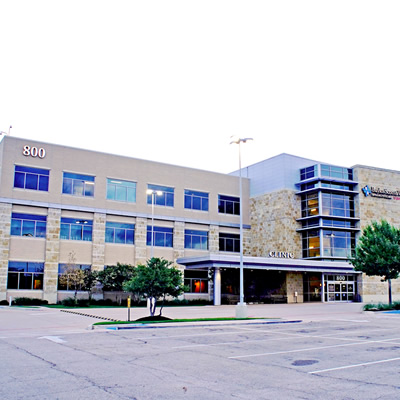
Baylor Scott & White Specialty Clinic - Marble Falls
800 W State Hwy 71 , Marble Falls, TX, 78654
- Monday: 8:00 am - 5:30 pm
- Tuesday: 8:00 am - 5:30 pm
- Wednesday: 8:00 am - 5:30 pm
- Thursday: 8:00 am - 5:30 pm
- Friday: 8:00 am - 5:30 pm
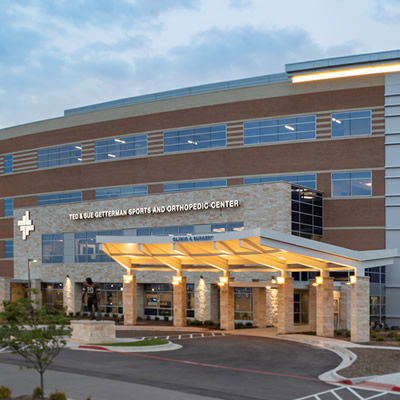
Baylor Scott & White Sports and Orthopedic Center
140 Hillcrest Medical Blvd , Waco, TX, 76712
- Monday: 8:00 am - 5:00 pm
- Tuesday: 8:00 am - 5:00 pm
- Wednesday: 8:00 am - 5:00 pm
- Thursday: 8:00 am - 5:00 pm
- Friday: 8:00 am - 5:00 pm

Baylor Scott & White Sports Medicine and Orthopedic Institute - Mansfield
1776 N US 287 Ste 220, Mansfield, TX, 76063
- Monday: 8:00 am - 4:30 pm
- Tuesday: 8:00 am - 4:30 pm
- Wednesday: 8:00 am - 4:30 pm
- Thursday: 8:00 am - 4:30 pm
- Friday: 8:00 am - 4:30 pm

Baylor Scott & White Sports Medicine and Orthopedic Institute - Midlothian
1441 S Midlothian Pkwy Ste 100, Midlothian, TX, 76065
- Monday: 8:00 am - 4:30 pm
- Tuesday: 8:00 am - 4:30 pm
- Wednesday: 8:00 am - 4:30 pm
- Thursday: 8:00 am - 4:30 pm
- Friday: 8:00 am - 4:30 pm
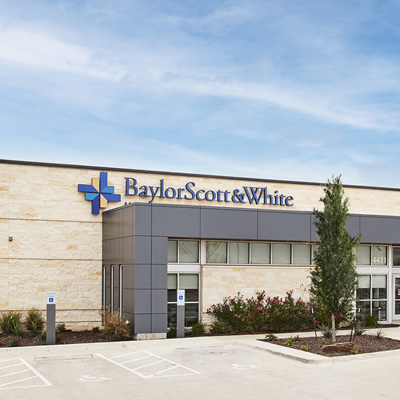
Baylor Scott & White Sports Medicine and Orthopedic Institute - Midway Midlothian
4431 E US Hwy 287 , Midlothian, TX, 76065
- Monday: 8:00 am - 4:30 pm
- Tuesday: 8:00 am - 4:30 pm
- Wednesday: 8:00 am - 4:30 pm
- Thursday: 8:00 am - 4:30 pm
- Friday: 8:00 am - 4:30 pm
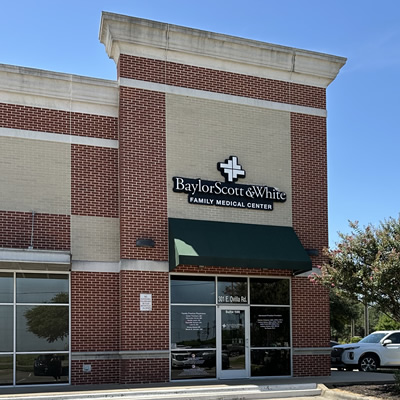
Baylor Scott & White Sports Medicine and Orthopedic Institute - Red Oak
301 E Ovilla Rd Ste 100, Red Oak, TX, 75154
- Monday: 8:00 am - 4:30 pm
- Tuesday: 8:00 am - 4:30 pm
- Wednesday: 8:00 am - 4:30 pm
- Thursday: 8:00 am - 4:30 pm
- Friday: 8:00 am - 4:30 pm
Frequently asked questions
-
How long does tendonitis last?
With rest and other forms of treatment, tendonitis often heals in two to three weeks. If you have severe inflammation, however, healing may take several months.
-
Does tendonitis go away?
In some cases, tendonitis may heal on its own eventually, but you shouldn’t count on that. Early diagnosis and treatment can relieve symptoms sooner, help you return to activities faster and reduce the risk of inflammation becoming chronic.
-
Can tendonitis cause stiffness?
Yes, tendonitis can cause stiffness in the affected joint, especially after resting or being inactive. The inflammation limits movement, but gentle movement can help relieve it. Stiffness can happen in areas like the shoulder, elbow, knee, wrist or Achilles tendon and is usually more common when you wake up.
-
What is the difference between ligaments and tendons?
Ligaments connect bones and help stabilize joints, while tendons connect muscles to bones, allowing movement. A sprain happens when a ligament is stretched or torn, while a strain refers to a stretched or torn tendon or muscle.
-
How do you strengthen tendons?
To strengthen tendons, try exercises like weightlifting, controlled stretching and balance work. Start slowly and gradually increase intensity. Short bursts of activity, along with slow, controlled movements, help too. Be sure to get plenty of rest to support recovery and tendon health.
-
Does massage help tendonitis?
Yes, massage can help tendonitis by reducing swelling and improving range of motion. Before trying massage for tendonitis, however, ask your physician whether it’s appropriate for you and which type of massage would be most beneficial.
-
Is physical therapy needed for tendonitis?
Yes, physical therapy can be effective for treating tendonitis. It helps strengthen muscles, improve flexibility and reduce pain through techniques like massage and movement exercises. Therapists also teach proper posture and movement habits to prevent further strain on the tendon. Additional treatments may include ice, heat and electrical therapy.

